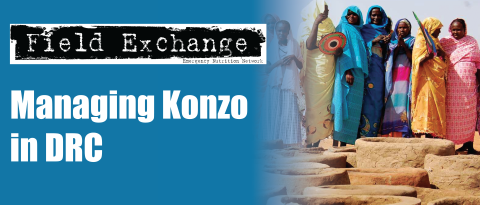Emergency intervention priorities from child wasting and mortality in the Horn of Africa
Summary of review1
Arecent study set out to assess criteria for emergency intervention decision-making in the Horn of Africa based on associations between child wasting and mortality from 2000 to 2005. Previous studies have shown that the relationship between underweight (measured by weight for age) and mortality differ between different populations. However, no such meta-analysis has been conducted for wasting and mortality. The current criteria for deciding on the severity of emergencies include food security indicators, wasting prevalence, and mortality rates. How these data are used to define an emergency depends on the information system being applied. Furthermore, the types of indicator used in different systems are universally applied, irrespective of livelihood or usual child growth patterns. This implies that malnutrition indicators have the same relations to risk for all populations.
The study was conducted on surveys between 2000 and 2005. Data were analysed on child global acute malnutrition (GAM) prevalence and mortality estimates from about 900 area-level nutrition surveys from Ethiopia, Kenya, Somalia, Sudan and Uganda. Data on drought, floods, and food insecurity were added for Kenya (Rift Valley) and Ethiopia from the food and Agricultural Organisation (FAO) reports at the time. Populations from urban areas and internally displaced people (IDPs) were excluded from the analysis. A total of 316 valid cases with GAM and under five mortality rate (U5MR) were included in the working dataset. Estimates of mortality were usually obtained by questionnaire through a 90-day recall.
The analysis found that higher rates of GAM were associated with increased mortality of children under 5 years of age, more strongly among populations with pastoral livelihoods than with agricultural livelihoods. GAM is therefore more effective in identifying groups with higher mortality risk for those practicing some pastoralism, but there is still useful predictive power for agricultural populations, with lower GAM cut-off points.
In all groups, spikes of GAM and U5MR corresponded with drought (and floods). Furthermore, different GAM cut-off points are needed for different populations. For example, to identify 75% of U5MR above 2/10,000/day, the GAM cut-off point ranged from 20% GAM in the Rift Valley (Kenya) to 8% in Oromia or SNNPR (Ethiopia) or from 15% for pastoralists to 10% for agropastoralists.
This suggests that survey results should be displayed as time series within geographic areas and that variable GAM cut-off points should be used, depending on livelihood or location. For example, a GAM cutoff point of 15% may be appropriate for pastoral groups and 10% for agricultural livelihood groups. These may be further tailored if resources are scarce and related to area. New survey results in an unknown situation could be assessed in several ways. First, they could be classified as above or below a wasting prevalence defined as having historically correctly identified high mortality cases. Secondly, single survey results of wasting prevalence can also be judged by comparison with distributions of previous GAM prevalence.
These data give a basis for re-examining the guidelines currently used for interpreting wasting (or GAM) prevalence in terms of implications for interventions. For the first time, this interpretation can be based on relation to risk - here, child mortality. Moreover, the authors argue, it seems no longer justifiable to apply a single wasting prevalence cut-off point when making decisions on emergency interventions for different populations, defined by area or by livelihood.
1Mason. J et al (2010). Identifying priorities for emergency intervention from child wasting and mortality estimates in vulnerable areas of the Horn of Africa. Food and Nutrition Bulletin, vol 31, no 3 (supplement), pp s234-s247, 2010
Imported from FEX website


